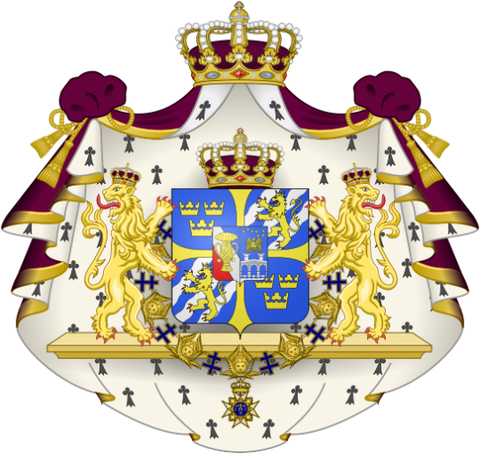National Arms, part 7, Sweden

 In 1446 King Karl Knutsson Bonde ( image left ) used a seal which shows what one might describe as the prototype of the present day Greater State Arms. The quarters represent the three crowns and the Folkunga Arms and are separated by a narrow cross. This was probably inspired by the arrangement outlined above, for over all he placed an escutcheon ( small shield ) of the Arms of Bonde. This pattern has remained in use ever since with succeeding dynasties merely changing the arms on the escutcheon. The Arms of Vasa replaced thos of Bonde, and Karl XIV Johan ( 1818-1844 ) impaled his own Arms of Bernadette with the Arms of Vasa, undoubtedly to indicate that he had been adopted as heir by the last sovereign of that house.
In 1446 King Karl Knutsson Bonde ( image left ) used a seal which shows what one might describe as the prototype of the present day Greater State Arms. The quarters represent the three crowns and the Folkunga Arms and are separated by a narrow cross. This was probably inspired by the arrangement outlined above, for over all he placed an escutcheon ( small shield ) of the Arms of Bonde. This pattern has remained in use ever since with succeeding dynasties merely changing the arms on the escutcheon. The Arms of Vasa replaced thos of Bonde, and Karl XIV Johan ( 1818-1844 ) impaled his own Arms of Bernadette with the Arms of Vasa, undoubtedly to indicate that he had been adopted as heir by the last sovereign of that house.Sweden admirably illustrates the resolution of the initial uncertainty which has prevailed in many states with regard to their arms. To this day the State of Arms of Sweden occur in two principal forms, the Greater and the Lesser. The shield of the latter simply bears the three crowns
.



